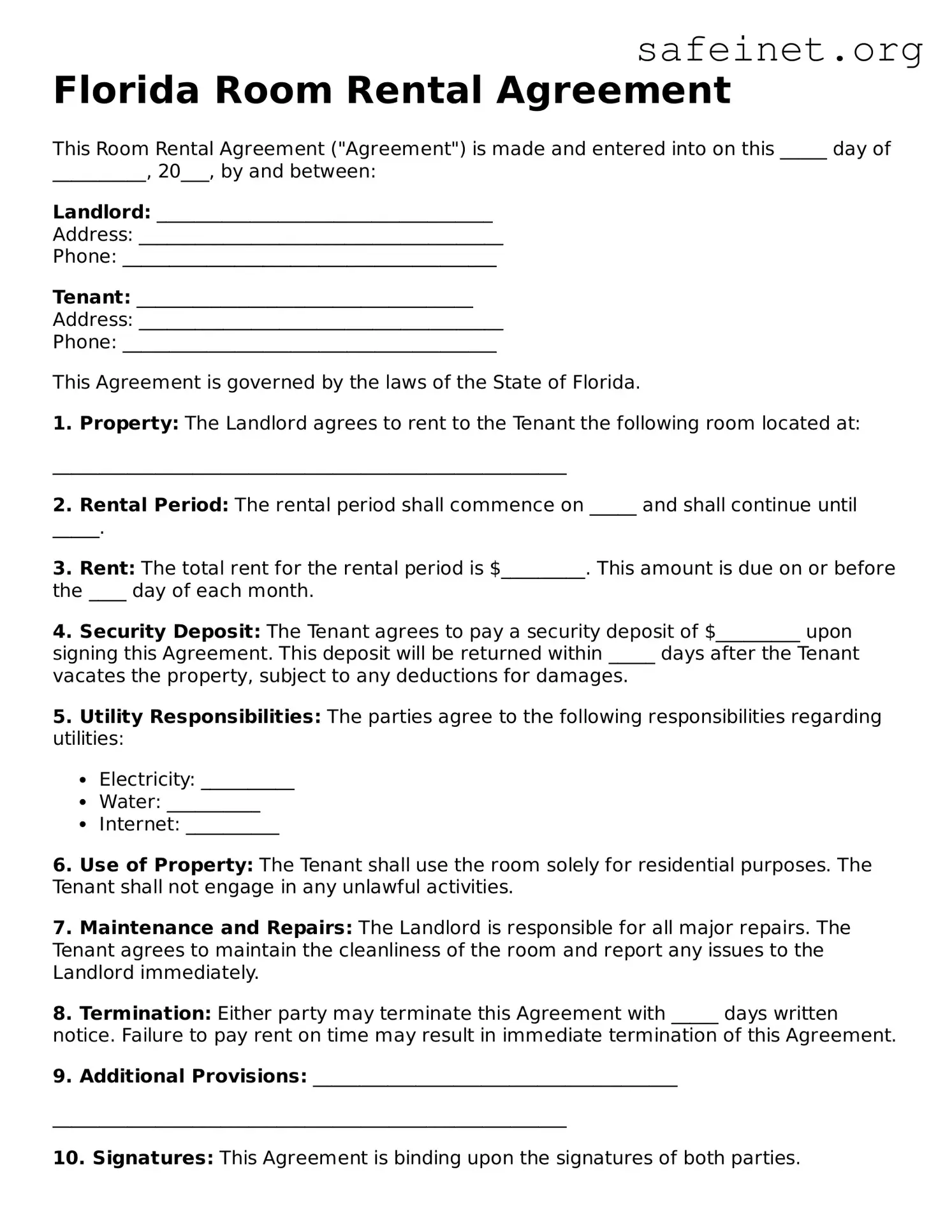Florida Room Rental Agreement
This Room Rental Agreement ("Agreement") is made and entered into on this _____ day of __________, 20___, by and between:
Landlord: ____________________________________
Address: _______________________________________
Phone: ________________________________________
Tenant: ____________________________________
Address: _______________________________________
Phone: ________________________________________
This Agreement is governed by the laws of the State of Florida.
1. Property: The Landlord agrees to rent to the Tenant the following room located at:
_______________________________________________________
2. Rental Period: The rental period shall commence on _____ and shall continue until _____.
3. Rent: The total rent for the rental period is $_________. This amount is due on or before the ____ day of each month.
4. Security Deposit: The Tenant agrees to pay a security deposit of $_________ upon signing this Agreement. This deposit will be returned within _____ days after the Tenant vacates the property, subject to any deductions for damages.
5. Utility Responsibilities: The parties agree to the following responsibilities regarding utilities:
- Electricity: __________
- Water: __________
- Internet: __________
6. Use of Property: The Tenant shall use the room solely for residential purposes. The Tenant shall not engage in any unlawful activities.
7. Maintenance and Repairs: The Landlord is responsible for all major repairs. The Tenant agrees to maintain the cleanliness of the room and report any issues to the Landlord immediately.
8. Termination: Either party may terminate this Agreement with _____ days written notice. Failure to pay rent on time may result in immediate termination of this Agreement.
9. Additional Provisions: _______________________________________
_______________________________________________________
10. Signatures: This Agreement is binding upon the signatures of both parties.
Landlord Signature: _________________________________ Date: ____________
Tenant Signature: ___________________________________ Date: ____________
By signing, both parties agree to the terms outlined in this Room Rental Agreement.
